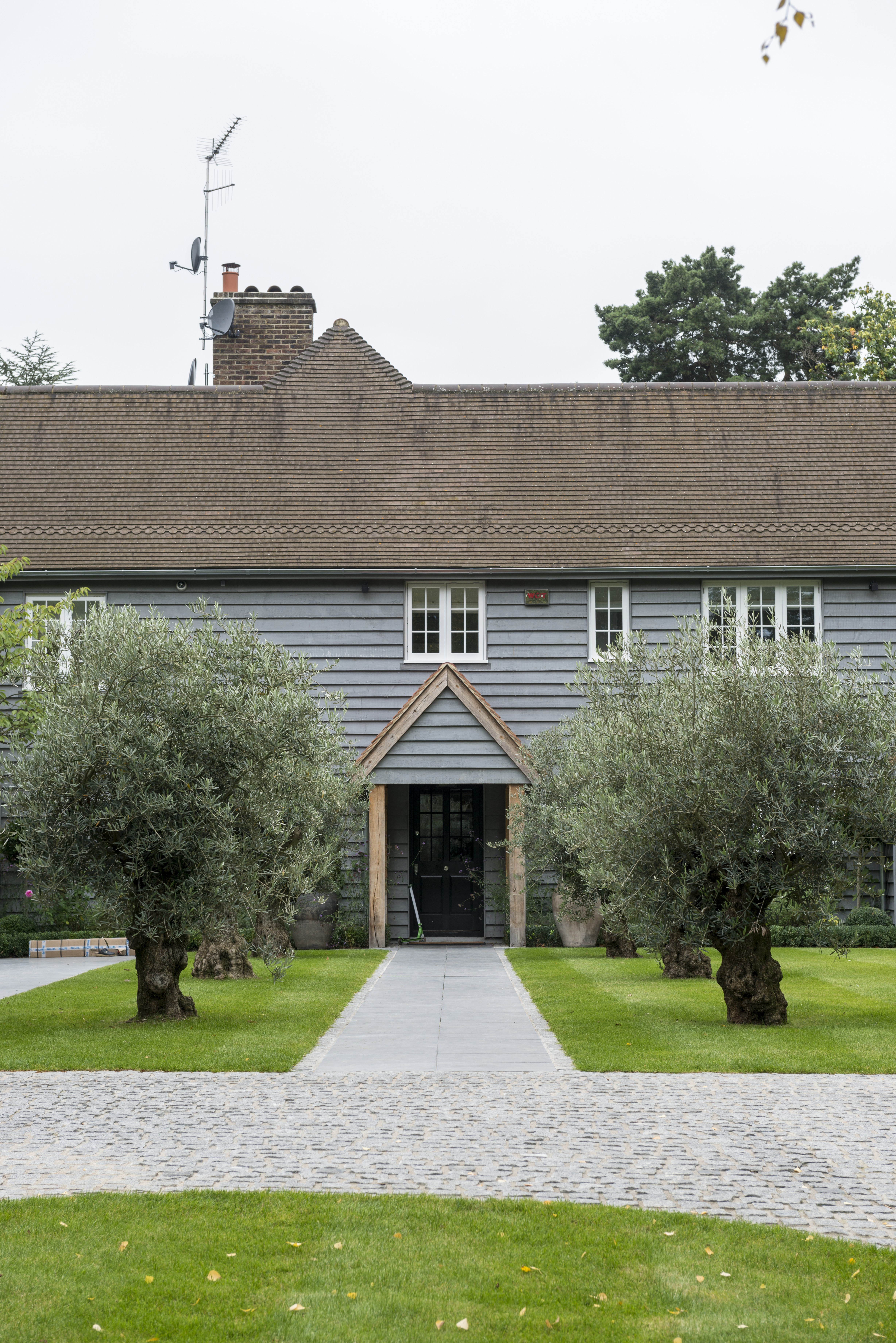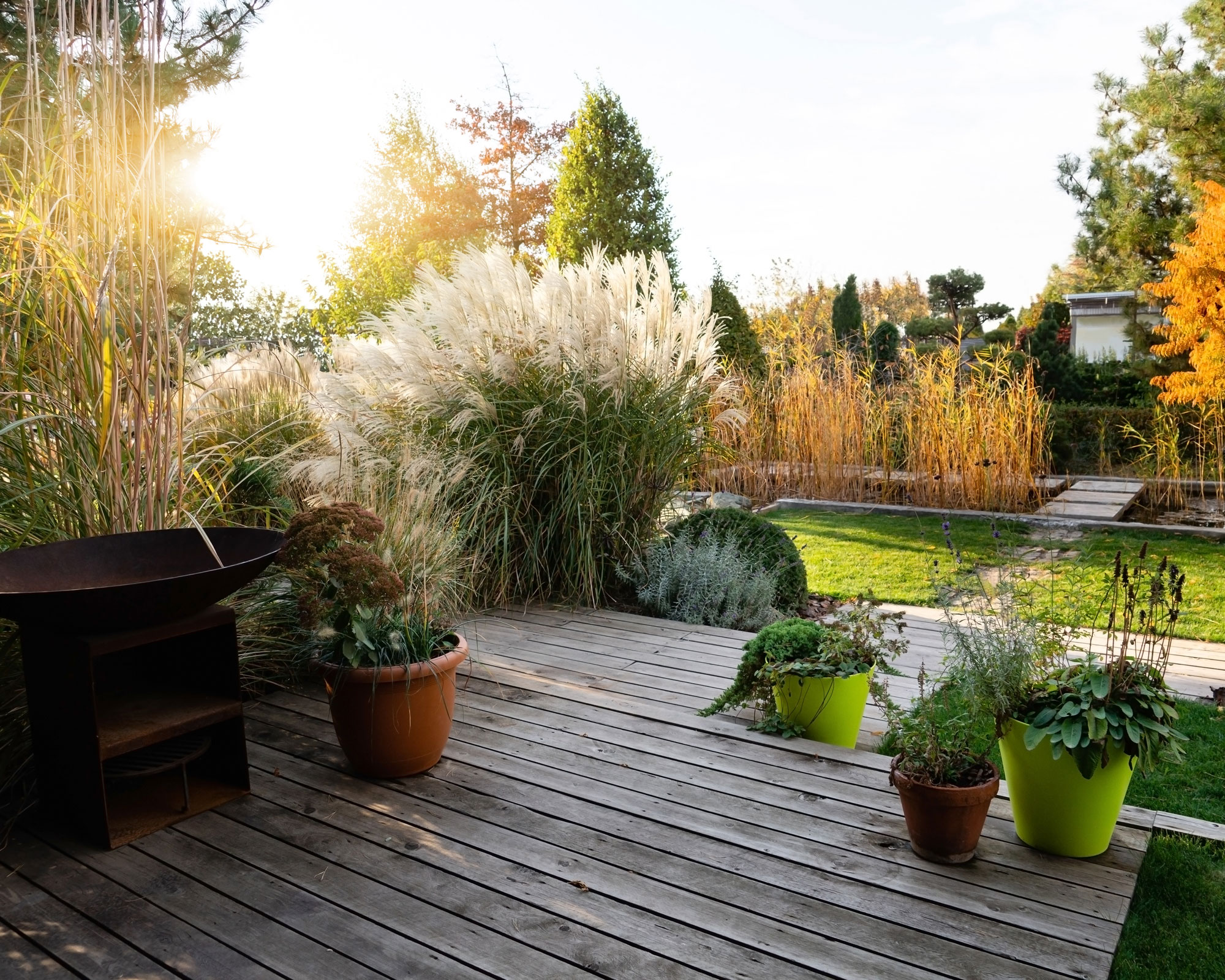
A full, lush, and thriving lawn can be the pride of a house; whether it's creating curb appeal for your front yard, or a playground for kids out the back. But maintaining a lawn is no easy task. Foot traffic, garden tools, those same kids getting a little bit too active in your backyard, pets and more can cause damage to it, making your perfectly manicured lawn look less than pristine.
When a lawn starts developing bald spots, you're in for trouble, especially as these patchy areas provide space for weeds to invade your grass.
Enter overseeding. This gardening technique is ideal for fixing a problematic lawn, and requires very little manual labor - ie. no digging. Whether you're unfamiliar with overseeding, or just not sure if it's right for your backyard or front lawn, we asked the experts to explain exactly what it means, and the types of lawns it's right for.
What is overseeding?
'Overseeding consists of sowing new seeds over an existing lawn,' says Chris Bonnett, founder of GardeningExpress. 'It’s a great way to help get fuller-looking grass without having to tear up any existing turf or soil. It’s also the perfect option for those looking to treat their grass without any harsh chemicals and fertilizers.'
For a modern garden that looks healthy, this technique requires three simple steps: lawn preparation, fertilizing, and evenly sprinkling top-quality grass seed over the existing lawn.
'Before overseeding you’ll want to consider the weather conditions,' says Chris. 'Ensure the grass is dry and that the soil has hit a temperature of at least 50°F. It’s also vital that you remove any old grass clippings or dead grass so that the seeds can fall into direct contact with the soil. Finally, make sure you are overseeding when your lawn experiences less foot traffic as you’ll want to avoid walking over it for at least three weeks minimum.'

What type of grass is ideal for overseeding?

According to Reese L Robins, gardening expert at Just Pure Gardening, some of the best grasses for urban gardening and overseeding are as follows:
Kentucky bluegrass: This grass is known for its fine texture and rich green color. It is a popular choice for overseeding due to its ability to fill in damaged patches of grass with its dense growth. The young grass is especially effective at healing damaged areas through overseeding.
Tall fescue: This cool-season grass is well-suited for overseeding due to its texture and shade tolerance. Periodic overseeding can help maintain its density while avoiding a clumpy appearance.
Perennial ryegrass: This cool-season grass can establish quickly and blend well with the existing lawn. It is more disease-resistant than annual ryegrass.
Annual ryegrass: This single-season grass is often used for warm-season grasses in the winter to provide green color during colder months. As a single-season grass, it completes its life cycle in one growing season, providing quick green color and temporary ground cover.
What is the best technique to overseed?

To prepare your front, back, or courtyard garden for overseeding, you first need to mow the lawn. This is because the grass seeds need to get in contact with the soil, and for that, you need to ensure that your existing grass is shorter than usual.
The next step is to use a quick-release fertilizer so that your lawn gets a good boost, in preparing for new seeds. It will help your lawn grow and fill out more quickly. After the fertilizer, start loading the grass seed into a seed spreader and add about 16 seeds per square inch of soil.
'My preferred tool for overseeding is a push spreader or broadcaster,' says Kat Aul Cervoni, landscape designer and founder of Staghorn NYC and The Cultivation by Kat. 'It’s important that you read the directions for each spreader so that you distribute the seed evenly throughout your space. For instance, most spreaders have settings for how much seed is released from the spreader at once, and it’s important to pay heed to these things.'
If you don't have a seed spreader, you can also spread grass seeds by hand. Do consider the depth of the soil before adding seeds. If you add them in too deep, the plant will run out of energy to grow out till the top, or if left on the surface, it may dry out, or birds may eat them.
Finally, water the grass a little. Ideally, it's best to water the lawn every day after reseeding until your new grass is established. 'The best time to overseed a lawn is generally during the spring or early autumn,' says Reese. 'During these months, the weather is not too hot or too cold, which can help the new seeds germinate and grow.'
What are the benefits of overseeding?
'Overseeding can help create a low maintenance garden, and can improve the overall look of your lawn as it fills in bare patches with new grass,' says Reese. 'This can be especially helpful in areas where your lawn isn't as thick or lush as it should be. It also helps bring new life to older grass that has lost its color over time. Adding new grass seed to your lawn can help rejuvenate the older grass and restore its color and vitality.'
'It is also an environmentally friendly way to support your lawn because it reduces the need for chemicals,' says Reese. 'Many lawn care products contain chemicals that can harm the environment and wildlife. By using overseeding as a natural way to improve your lawn's health, you can reduce your reliance on these chemicals. And finally, improving your lawn's overall health through overseeding can make it harder for weeds and moss to return. You can create a dense carpet of grass that makes it difficult for weeds and moss to grow.'
'When it comes to lawn care, I often recommend overseeding as a way of reducing the need for more intense maintenance and repair measures throughout the rest of the year,' says Kat. 'It helps thicken your lawn, which not only looks better but will also help it better cope with things like insects and fungal diseases. It may seem counterintuitive, but an overseeded lawn also will require less fertilizer and water throughout the season.'
Are there any drawbacks?
Largely, the pros of overseeding outweigh the cons significantly, but there are some drawbacks to be aware of. 'If you live in a mild-to-warm climate you may have to continue mowing your lawn through the winter if you overseed in the fall (the recommended time for many lawn types),' says Kat. 'A disadvantage to those who are eager for a break from the maintenance during the winter. The other possible disadvantage is in cases when you go too heavy on the overseeding. It can cause new grass seedlings to compete with one another for nutrients, water, and sunlight and they’ll crowd each other out which will lead to dead/bare patches.'







